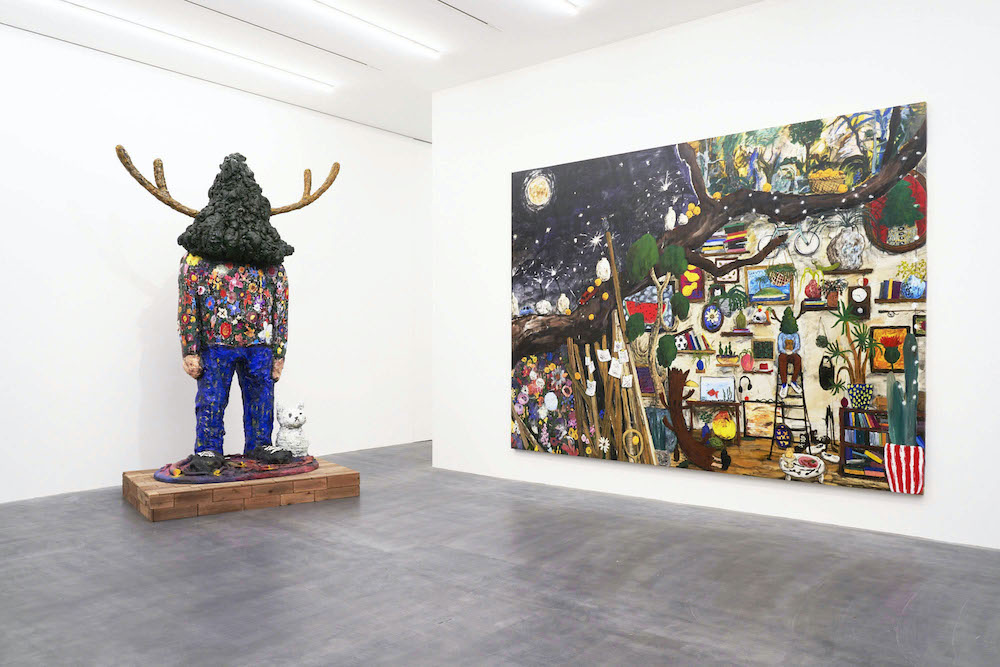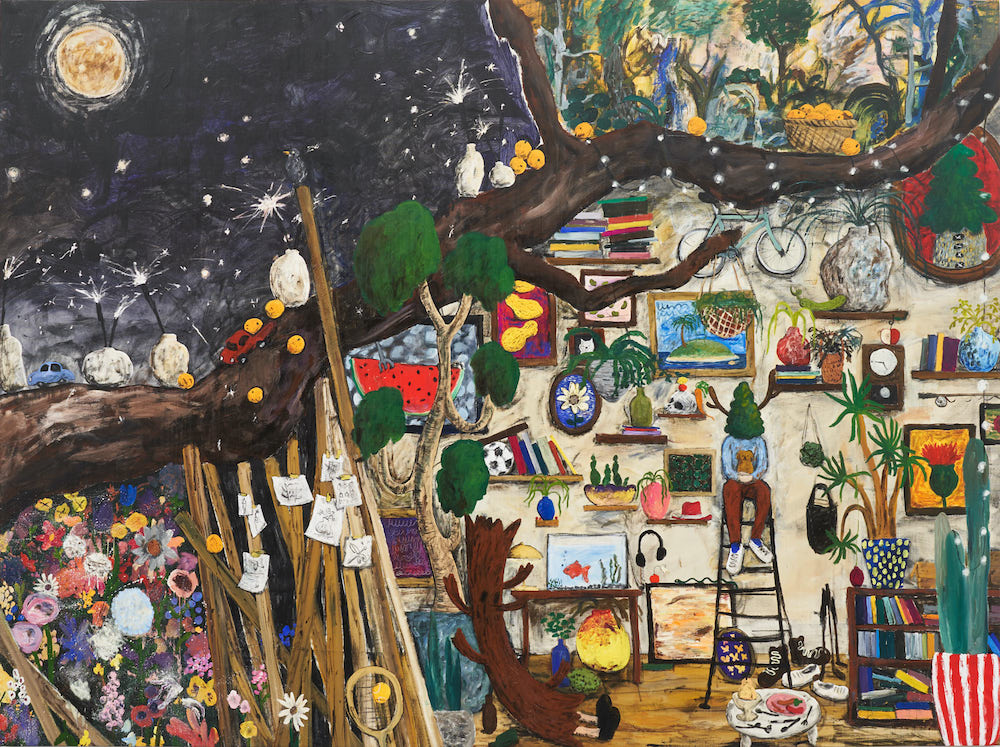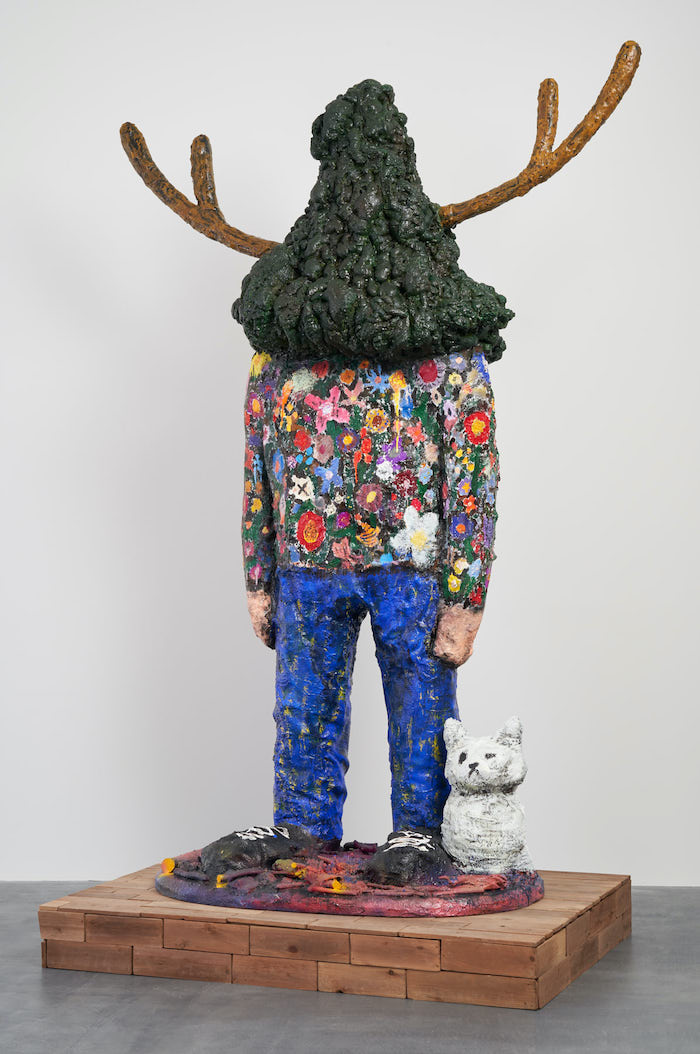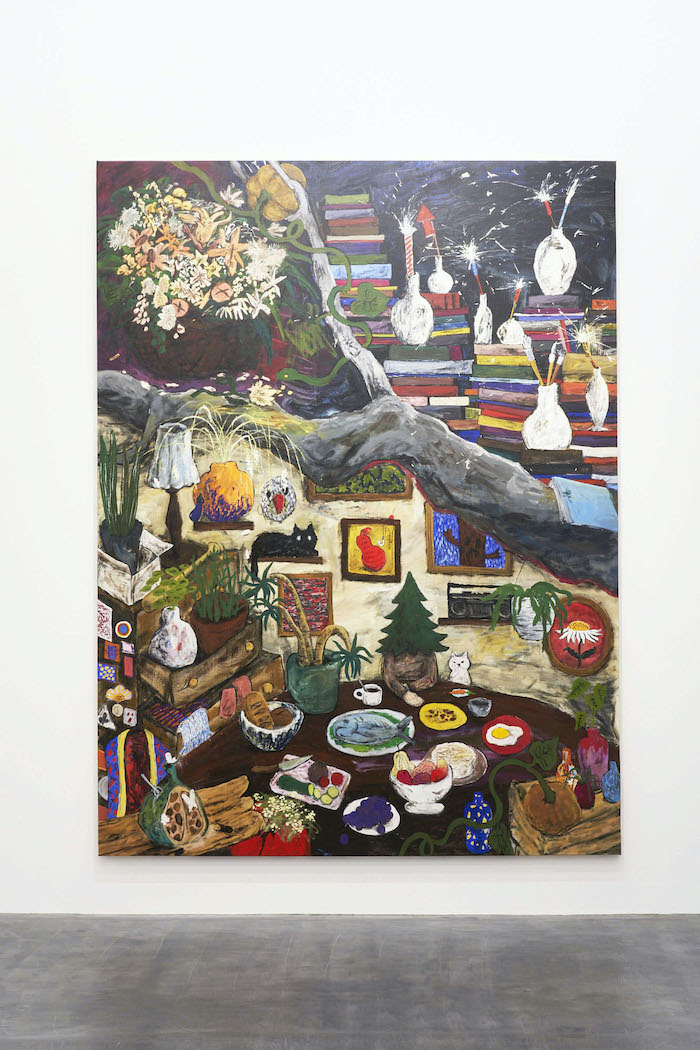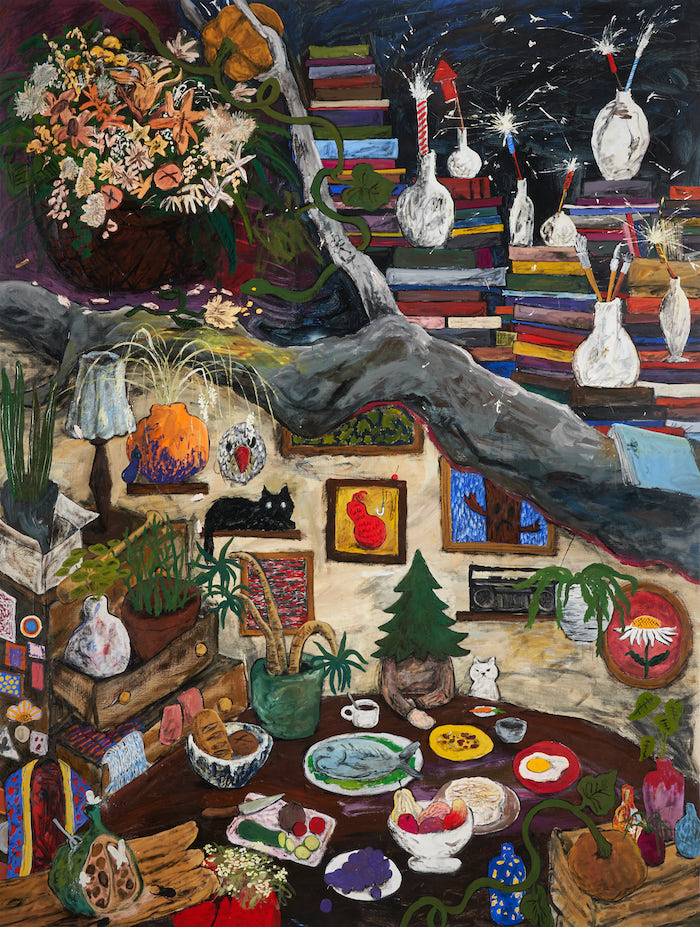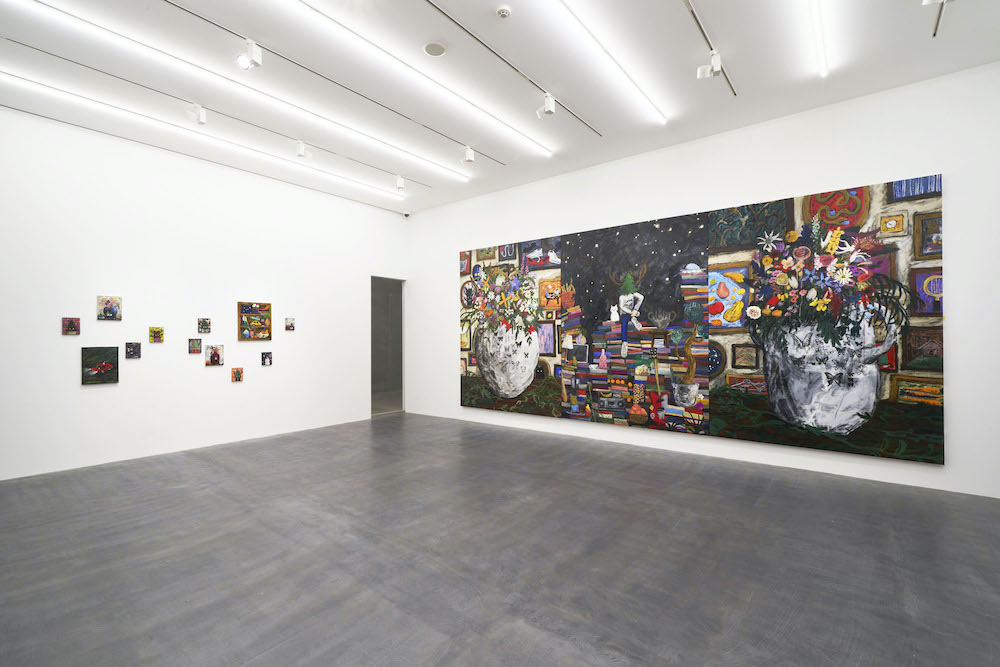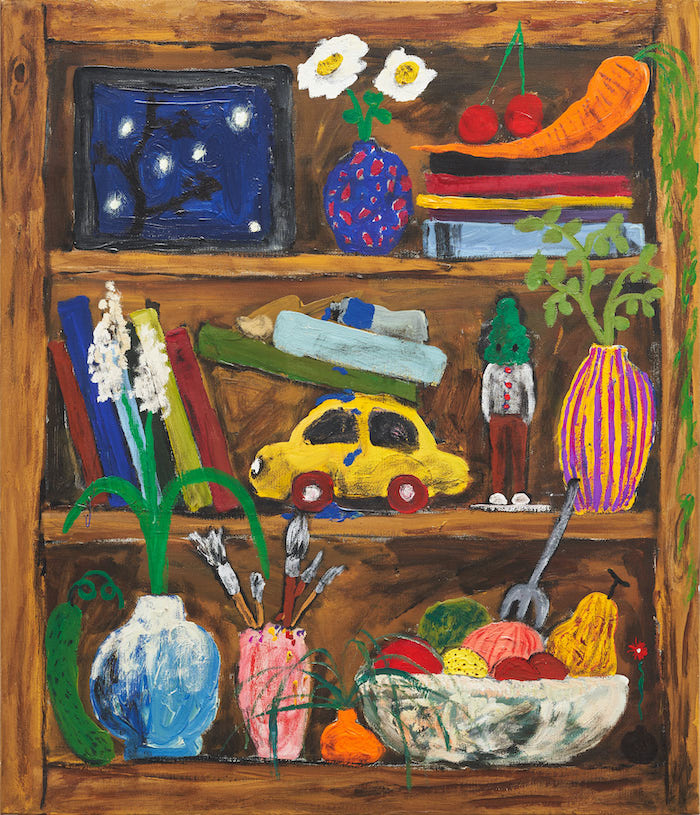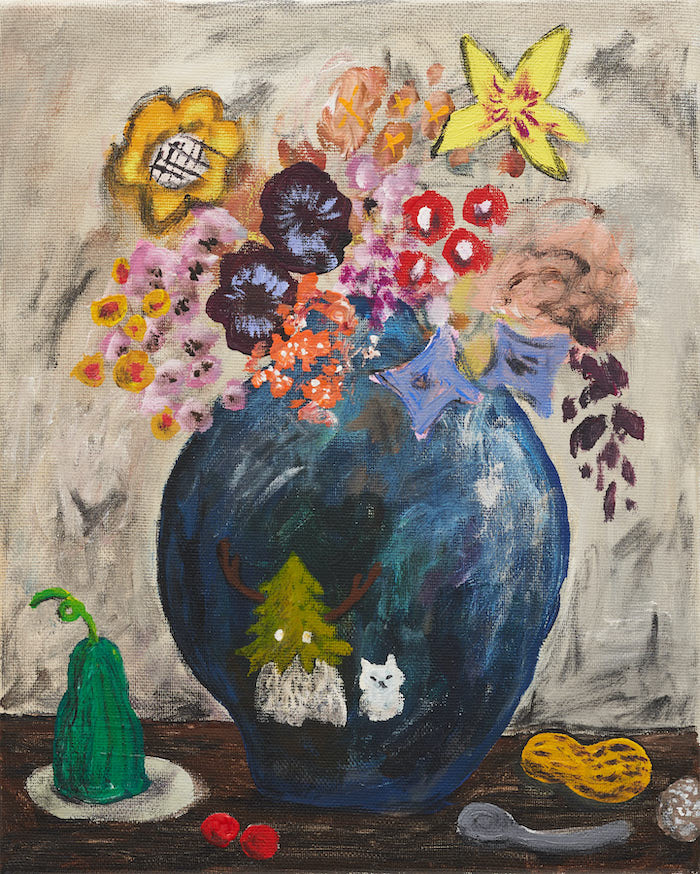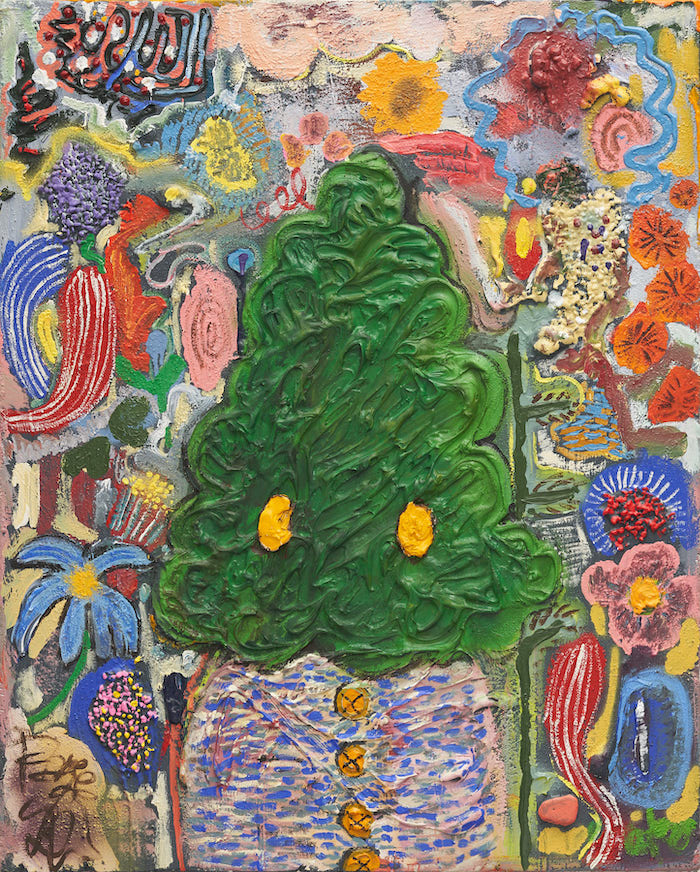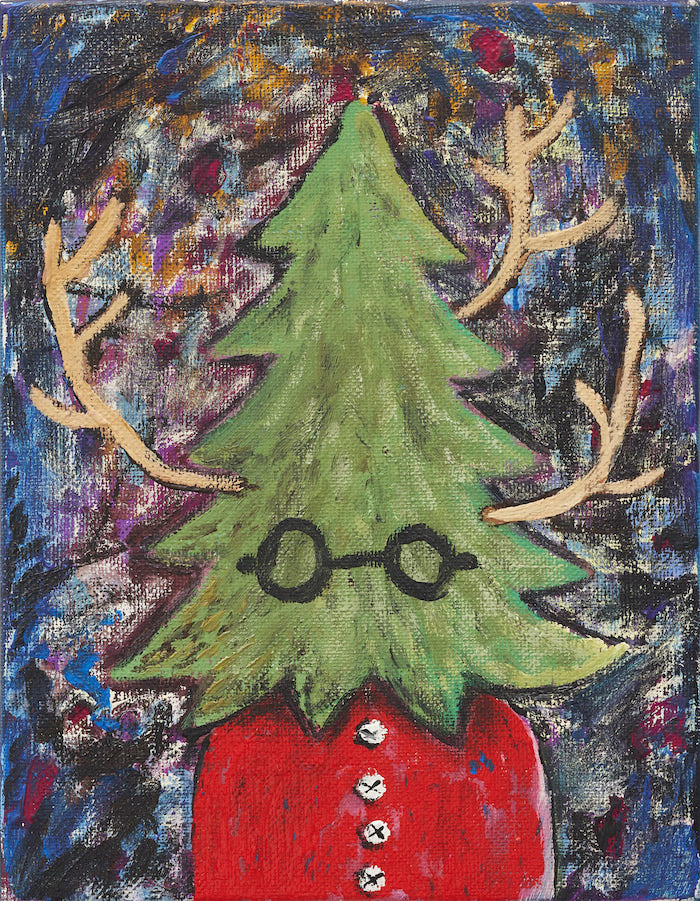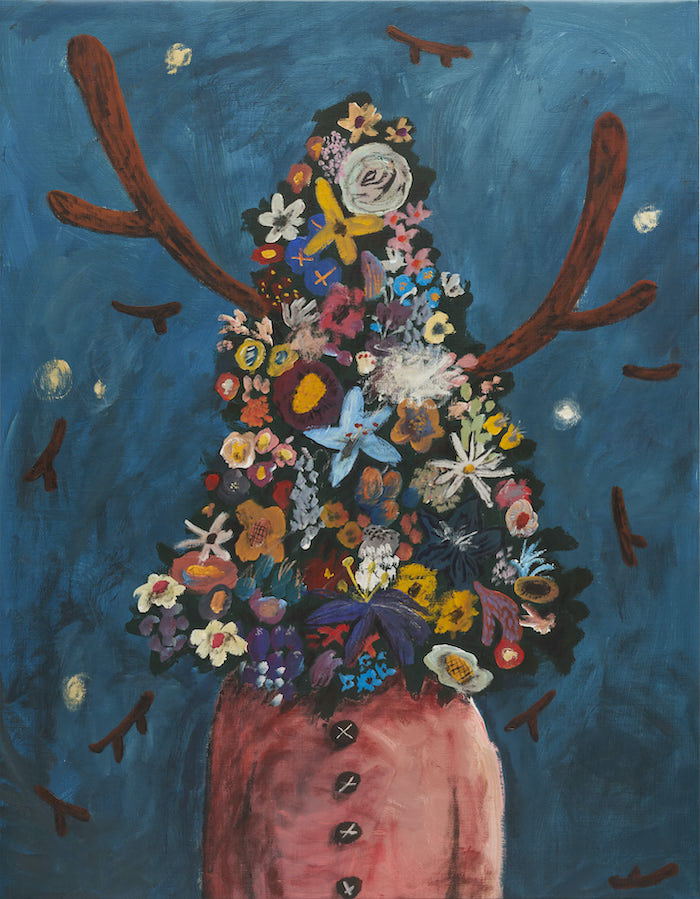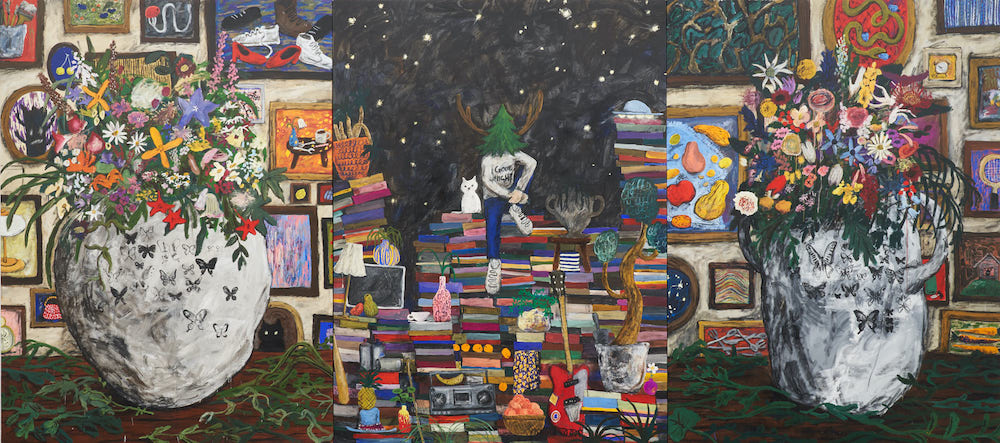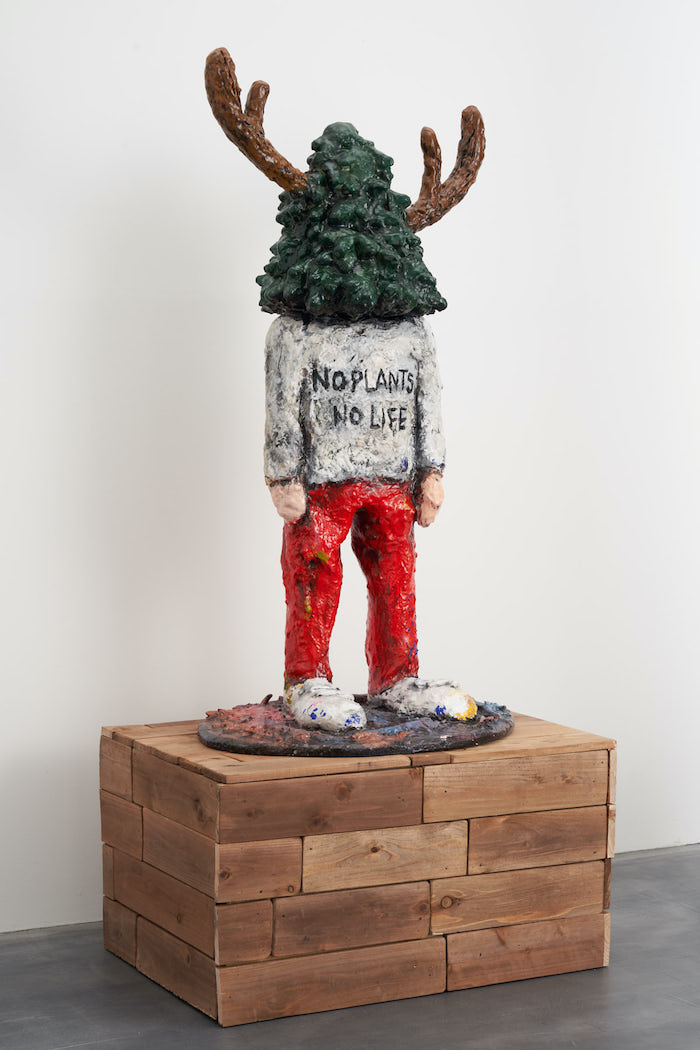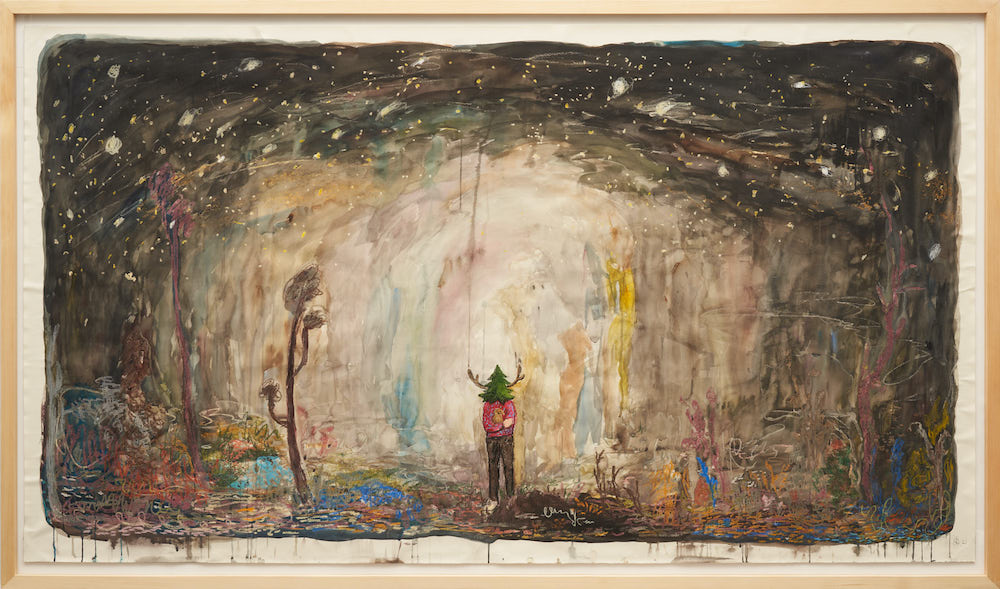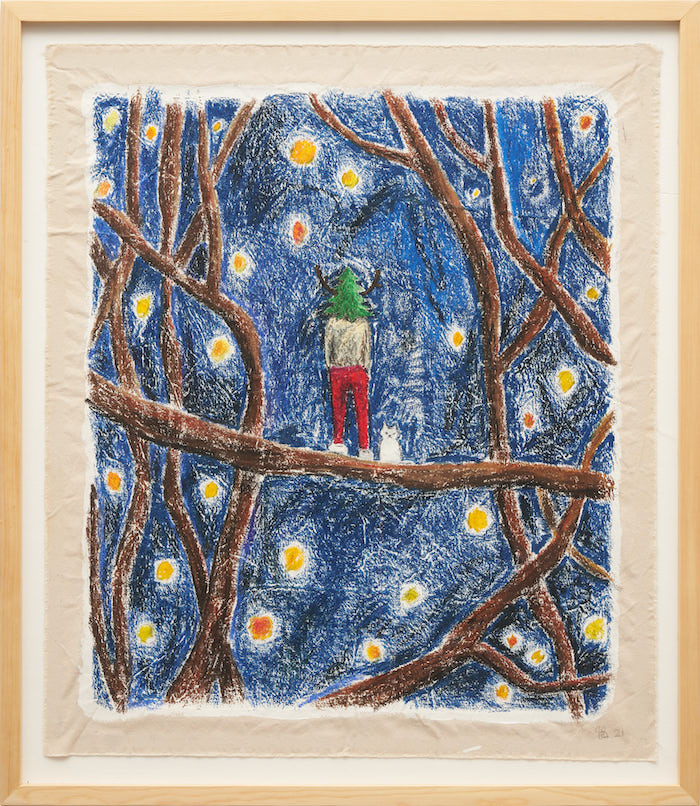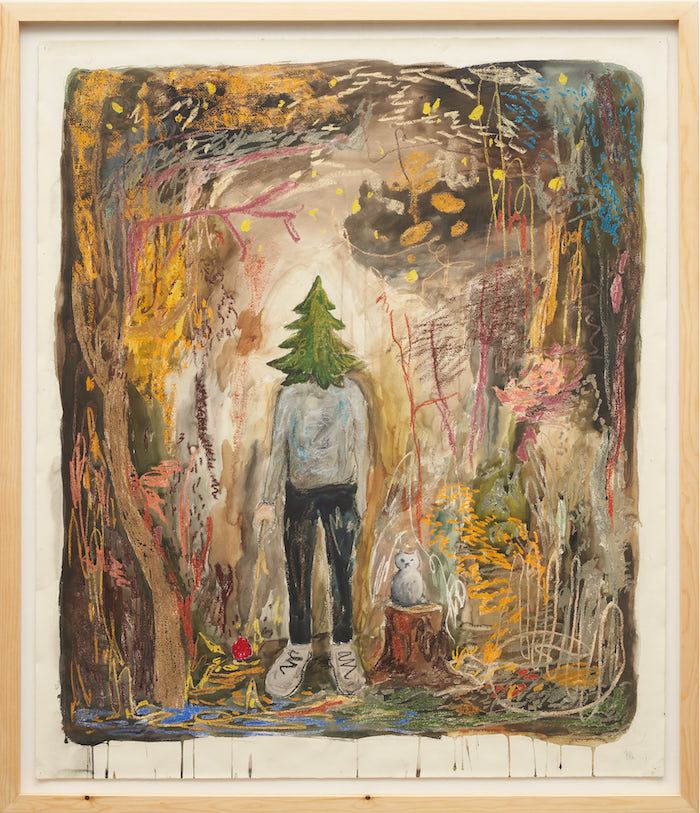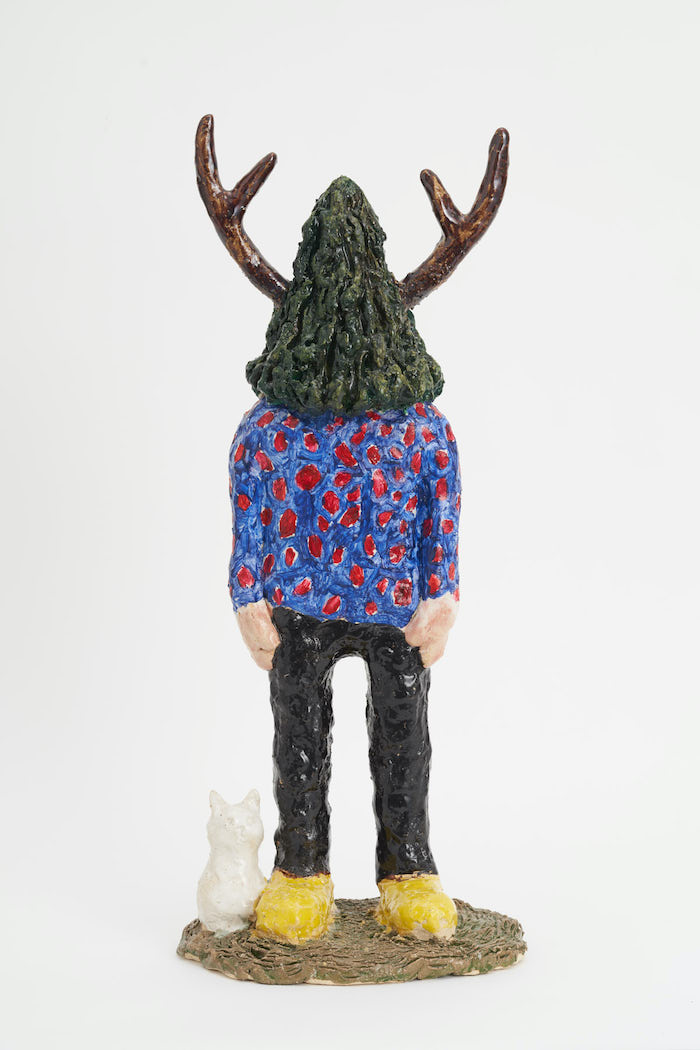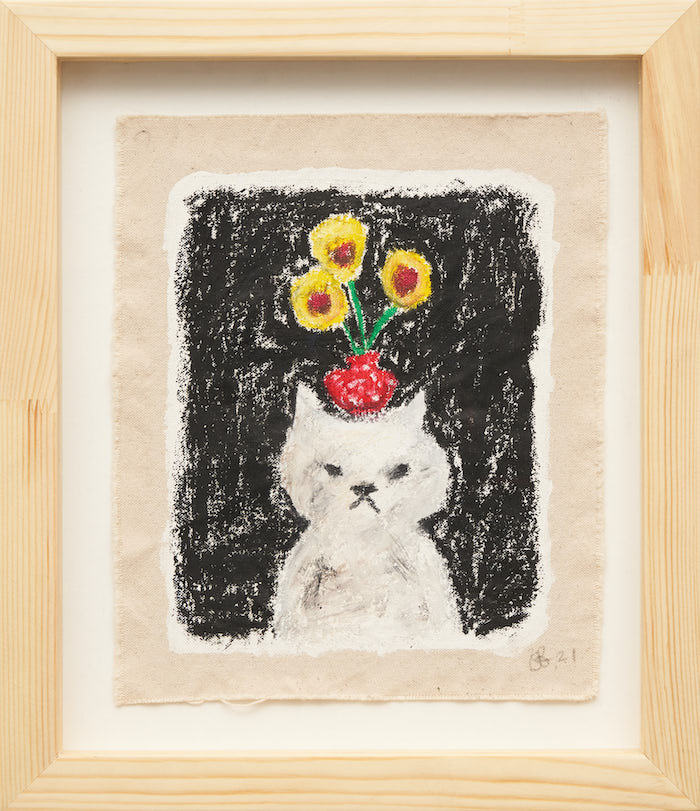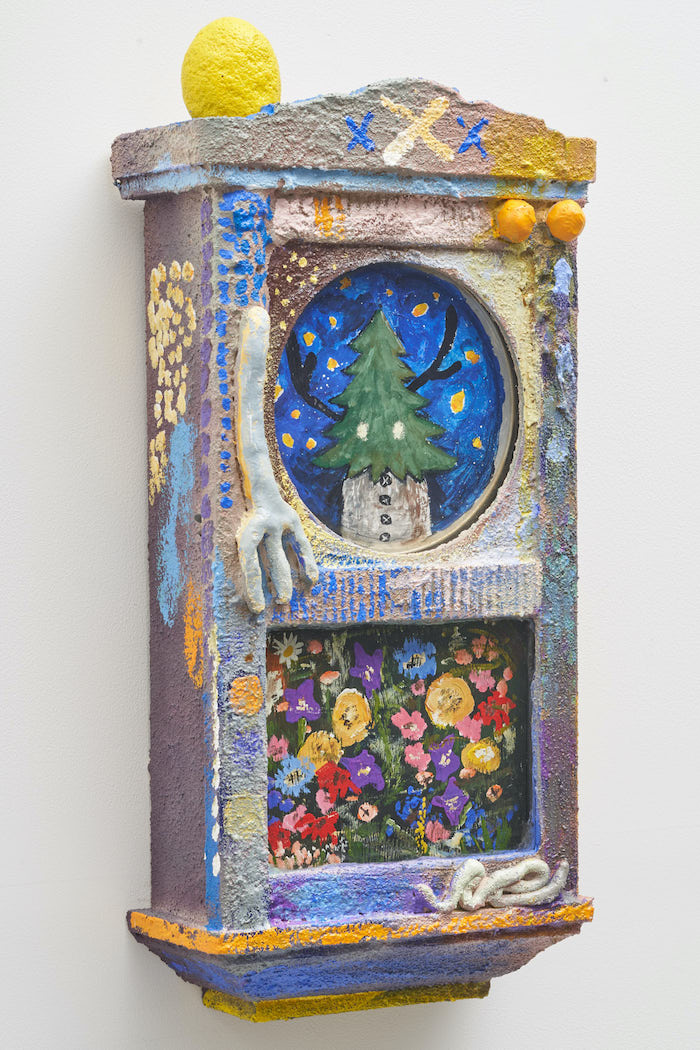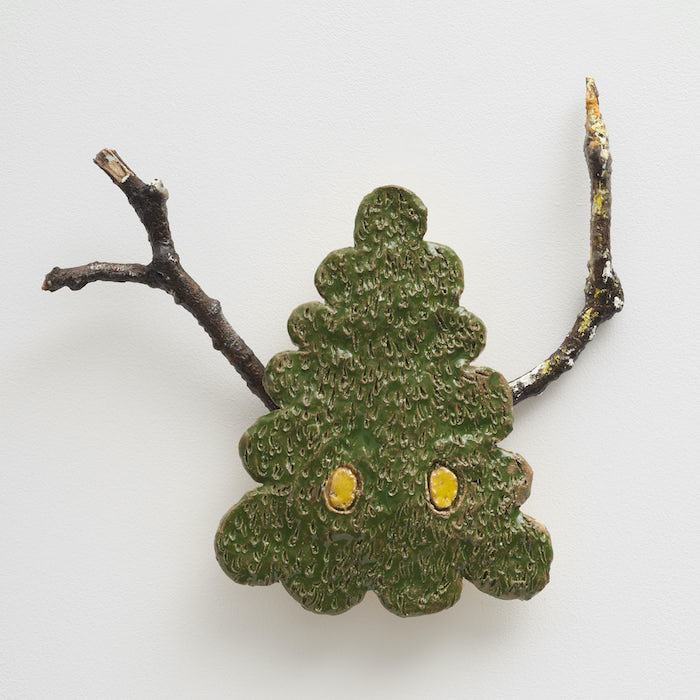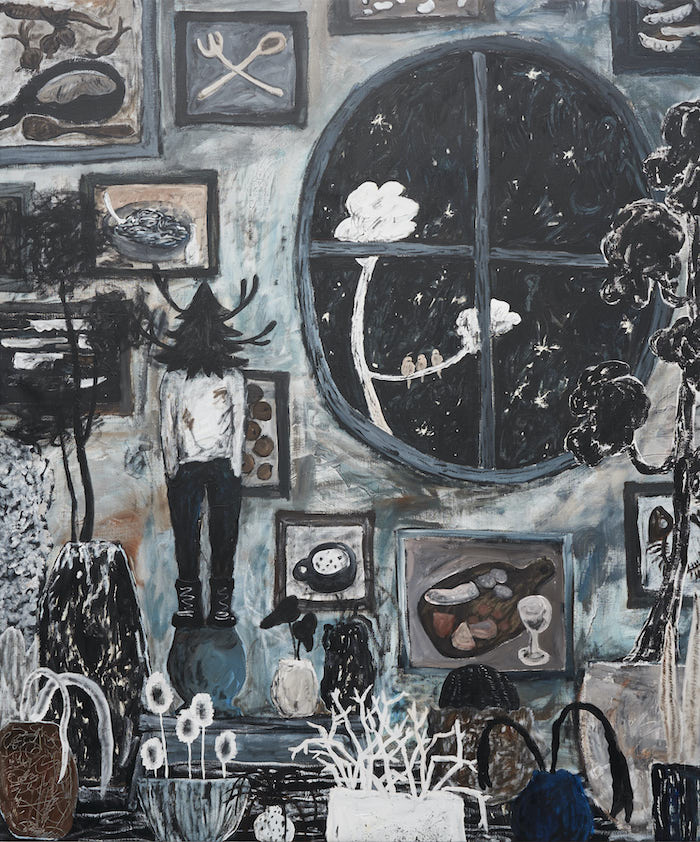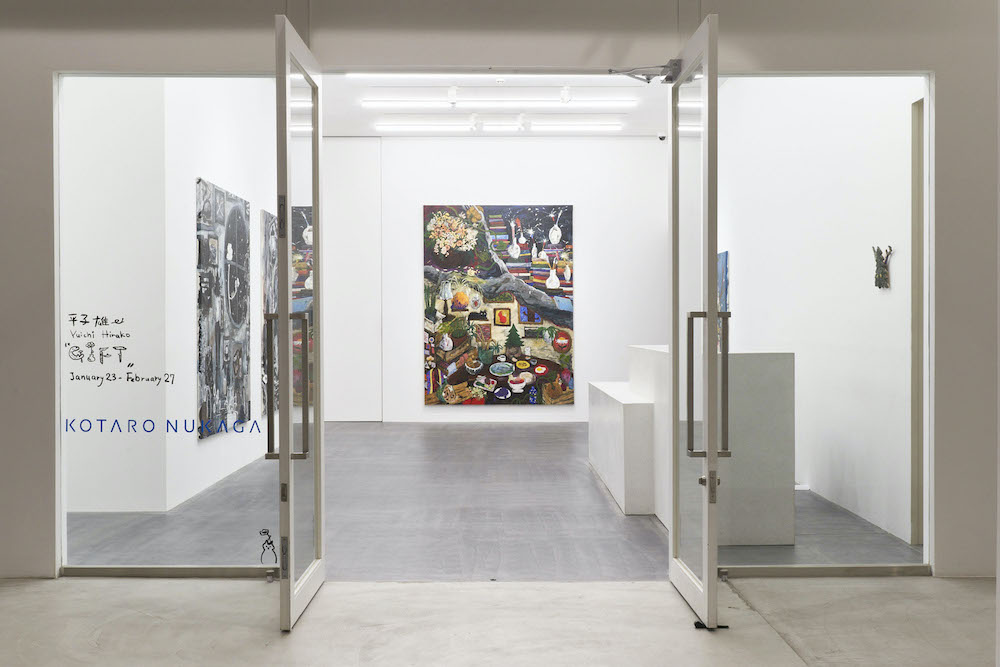Following his recent solo show in Hong Kong and a number of group show participations worldwide, Yuichi Hirako is currently having a debut solo presentation with KOTARO NUKAGA in Tokyo. With over 40 new works in the show, GIFT is a providing a great overview of the artist's exceptionally diverse and prolific practice which includes drawing, sculpture, installation, sound performance, and more.
Dominated by the mystical half-human, half-tree character, the works are speaking of the relationship between humans and nature, with a strong accent on our connection with plants and flora. Using the greenery as a symbol for the wild nature which we depend on, the artist is often recreating the lushness of the outdoor setting in his saturated compact interiors. Using books, pots, plants, musical instruments to create a vibrant setting, he is able to make a poetic connection between the untamed wilderness and well-organized, pre-planned domestic environments.
Hirako's 2 years absence from showing in the Japanese capital prompted the gallery to extend the duration of the show until April 3rd, and we used that opportunity to talk with the artist about this particular showcase and his practice in general.

Sasha Bogojev: The show at KOTARO NUKAGA feels like an absolute creative explosion. How long were you working on this show and what sort of assistance did you need to make it happen?
Yuichi Hirako: I have been thinking about the concept and plan of the exhibition since last summer, but the work itself was created intensively in about three months. Since my work is very much based on my own habits, I did most of the work myself. For example, I had assistants to help me with the sculpture pedestals and special frames.
Wow! Three months for such a large body of work is incredible. Where is the title GIFT coming from and what does it represent to you?
We define what a GIFT is according to our own convenience. If we compare it to a flower, the time of GIFT maybe when the flower is in full bloom, the moment of pollination, or when it withers and returns to the soil to become fertilizer. We are trying to understand, use, and coexist with plants and nature from a human perspective.
What drives you between different techniques and scales that you work with?
The basic concept is the same for all my works, but I use a variety of media. For example, in this exhibition, I used acrylic paint for painting, FRP and wood for sculpture, oil paint on ceramic for sculpture, watercolor paint on paper for drawing, oil pastel on canvas for drawing, and an old clock as a base for three-dimensional work. The size also varies.
I believe that the attitudes and ideas toward plants and nature are becoming more diverse. There is no right answer to this. I would like to express that diversity by creating works using various media.
Even within one medium, like painting, you tend to go between delicate acrylic or oil pastels on canvas and heavily textured oils on canvas. What informs such switches?
As I said, I try to express diversity by using different media to create my works. For example, people who need plants and people who don't need plants have completely different ways of handling them. In wealthy societies, nature is protected, while in poor societies, there is a lot of activity to destroy it for the sake of development. I do not judge which is the right action. I don't judge which is the right thing to do, but there are definitely different outcomes, and our choices will lead to different futures.
And how do those observations reflect in your work?
If you look closely at it, you may notice that there are many elements in my work. There is a mixture of elements in my work. Happiness, ideals, pessimism, cruelty, chaos, indifference, enthusiasm, permanence, and demise. I express these by varying the style of my work. Sometimes, though, there are experimental works that belong to none of these categories.
A lot of works depict cluttered environments. What do those represent to you?
I try to depict a space between nature (outside) and society (inside). The cluttered realism of my work represents my own society.
Books, art on the walls, or musical instruments, are some of the recurring characters that you often include in those. How come there are not many technology items in your work?
I am not able to determine the stage of our relationship with nature at the moment. I often refer to historical data when creating my work. I am interested in the relationship between industry and resources, between culture and nature, between religion and nature, and the actions we have taken against nature throughout history. Our current relationship with nature is based on the history we have lived through. I would like to incorporate this element into my work. I believe that if I let technological items exist in my work, it would make it a little too human (I have tried this in the past). I am trying to portray a middle ground between nature and society, people and plants, the past and the present.
Is the Gift 02 your largest painting to date and is there a certain story behind it?
Gift 02 is one of the largest of my past works. I placed vases with similar compositions on the left and right sides and painted many flowers, but I used different materials for the flowers. On the left side, I used materials of wildflowers and weeds as references. On the right, I drew flowers that have been bred and distributed in flower shops. They are the same flowers, but their roles and positions have changed greatly due to our choices. In the center, I drew a symbol of our society that has chosen to use them.
Seeing all the works you've included in the show, I was wondering— is there a certain type or scale of work you'd like to create in the near future?
In the future, I would like to create even larger sculptures, sound performance devices, mockumentary films (this may be a long way off...), etc.
Photo credit by Osamu Sakamoto\
Courtesy of KOTARO NUKAGA
©Yuichi Hirako

